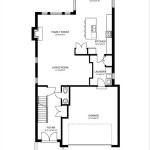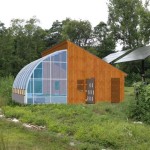Bamboo House Plant Light: Optimizing Growth and Well-being
Bamboo, specifically the *Dracaena sanderiana* variety often marketed as "lucky bamboo," is a popular houseplant prized for its aesthetic appeal and perceived symbolic value. Its ease of care contributes significantly to its prevalence in homes and offices. While often grown in water, bamboo can also thrive in soil. A crucial factor in its successful cultivation is adequate light exposure. Insufficient or excessive light can negatively impact the plant's health and appearance. This article will delve into the light requirements of bamboo houseplants, exploring different light conditions and their effects, and offering guidance on optimizing light exposure for robust growth.
Understanding the light needs of bamboo is paramount to its survival and aesthetic quality. Unlike some plants that can tolerate very low light conditions, bamboo requires a certain degree of illumination to perform photosynthesis, the process by which it converts light energy into chemical energy for sustenance. The intensity, duration, and type of light all play critical roles. Depriving the plant of adequate light can lead to etiolation, characterized by pale, elongated stems and sparse foliage. Conversely, exposing bamboo to harsh, direct sunlight can result in leaf scorch and stunted growth.
Identifying Optimal Light Conditions for Bamboo
Bamboo thrives best in bright, indirect light. This type of light exposure mimics the filtered sunlight found beneath the canopy of a forest, its natural habitat. Direct sunlight, particularly during the hottest parts of the day, can be detrimental. The delicate leaves of the bamboo plant are susceptible to sunburn, manifesting as browning or scorching. Identifying the right location within a home or office is therefore essential for providing the ideal light environment.
One common approach is to place the bamboo plant near a window that receives ample sunlight but is shielded by a sheer curtain or blinds. This diffuses the light, reducing its intensity and preventing leaf damage. East-facing windows are generally preferable, as they provide gentle morning light that is less harsh than the afternoon sun. South-facing windows can also be suitable, but require more careful management to prevent overexposure. North-facing windows typically provide the least amount of light, which may be insufficient for optimal growth, especially in areas with shorter daylight hours.
If natural light is limited, artificial lighting can supplement or replace it. Fluorescent lights are a common and effective option, emitting a broad spectrum of light that supports plant growth. LED grow lights are another viable alternative, offering energy efficiency and customizable light spectra. When using artificial lighting, it's important to position the lights at an appropriate distance from the plant to avoid overheating or light burn. A distance of 6-12 inches is generally recommended, depending on the intensity of the light source.
Recognizing the Signs of Incorrect Light Exposure
Observing the bamboo plant closely is crucial for determining whether it is receiving the appropriate amount of light. Several visual cues can indicate that the plant is either underexposed or overexposed to light. Early detection of these signs allows for timely adjustments to the plant's environment, preventing further damage and promoting healthy growth.
Signs of insufficient light include pale or yellowing leaves, elongated stems, and sparse foliage. The plant may also exhibit a general lack of vigor, with slow or stunted growth. In severe cases of light deprivation, the leaves may begin to drop off. Etiolation, as mentioned earlier, is a classic symptom of inadequate light. The stems become unnaturally stretched and thin as the plant attempts to reach for more light, resulting in a weak and unattractive appearance.
Conversely, signs of overexposure to light include browning or scorching of the leaves, particularly at the tips and edges. The leaves may also appear bleached or faded. In extreme cases, the entire plant may exhibit signs of dehydration, even if it is adequately watered. Direct sunlight can also cause the water in the container to heat up, potentially damaging the roots. If the water is used, algae may grow in the water, which can prevent the plant from properly absorbing nutrition.
When any of these symptoms are observed, it's essential to take immediate action. If the plant is receiving too little light, move it to a brighter location. If it is receiving too much light, shield it from direct sunlight or move it to a less intensely lit area. Monitor the plant closely after making these adjustments to ensure that it responds positively.
Optimizing Light Exposure Based on Growth Medium and Environment
The light requirements of bamboo can also be influenced by the growth medium and the overall environmental conditions. Bamboo grown in water, for instance, may have slightly different light needs compared to bamboo grown in soil. Similarly, plants in dry climates may require more light than those in humid environments. Adapting the light exposure to account for these factors is essential for achieving optimal growth.
Bamboo grown in water typically requires slightly more light than bamboo grown in soil. This is because the roots are less efficient at absorbing nutrients from water alone, relying more heavily on photosynthesis for energy production. Therefore, providing adequate light is critical for stimulating photosynthesis and ensuring that the plant receives sufficient nourishment. Regular fertilization with a liquid fertilizer specifically formulated for bamboo can also help to supplement the nutrient supply.
In drier climates, the leaves of the bamboo plant are more susceptible to dehydration and sunburn. Therefore, it's even more important to shield the plant from direct sunlight and maintain adequate humidity. Misting the leaves regularly can help to increase humidity levels and prevent leaf damage. Grouping plants together can also create a more humid microclimate. In contrast, bamboo plants in humid environments may tolerate slightly more direct sunlight, but it's still important to monitor them closely for signs of overexposure.
Seasonal changes can also impact the light requirements of bamboo. During the winter months, when daylight hours are shorter, the plant may require supplemental artificial lighting to maintain its health. Conversely, during the summer months, it may be necessary to provide additional shading to protect the plant from excessive sunlight. Adjusting the light exposure throughout the year can help to ensure that the bamboo plant receives the optimal amount of light for its needs.
The color of the pot the bamboo is kept in may also impact the temperature of the soil/water. Darker colors such as black might absorb more heat from the sun, causing the roots to overheat. Lighter colored pots such as white may reflect heat away from the roots, helping to keep the plant cool.
In conclusion, understanding and managing the light exposure of bamboo houseplants is a critical aspect of their care and well-being. Providing bright, indirect light is generally the optimal approach, but the specific needs of the plant may vary depending on the growth medium, environmental conditions, and seasonal changes. By observing the plant closely for signs of underexposure or overexposure, and adjusting the light exposure accordingly, it is possible to cultivate healthy and thriving bamboo plants in any indoor environment.

Houseplant Lighting Guide Gardener S Supply

Two Tier Led Grow Lights In Bamboo Plant Stand Gardeners Com Indoor Greenhouse Growing Indoors
The Complete Lucky Bamboo Plant Care Guide Water Light Beyond

How To Create Your Own Spiral Lucky Bamboo Laidback Gardener

Bamboo Home Led Grow Light Garden Hanging Plants Indoor Plant Stand House Decor

Buy Lucky Bamboo Plant 3 Layer Prosperity Elegance For Your Space

How To Grow Lucky Bamboo Houseplants Dracaena Sanderiana

Lucky Bamboo Care Growing Indoors Gardening Know How

Two Tier Led Grow Lights In Bamboo Plant Stand Gardeners Com Indoor Decor Plants

Lucky Bamboo Care A Unique Houseplant








